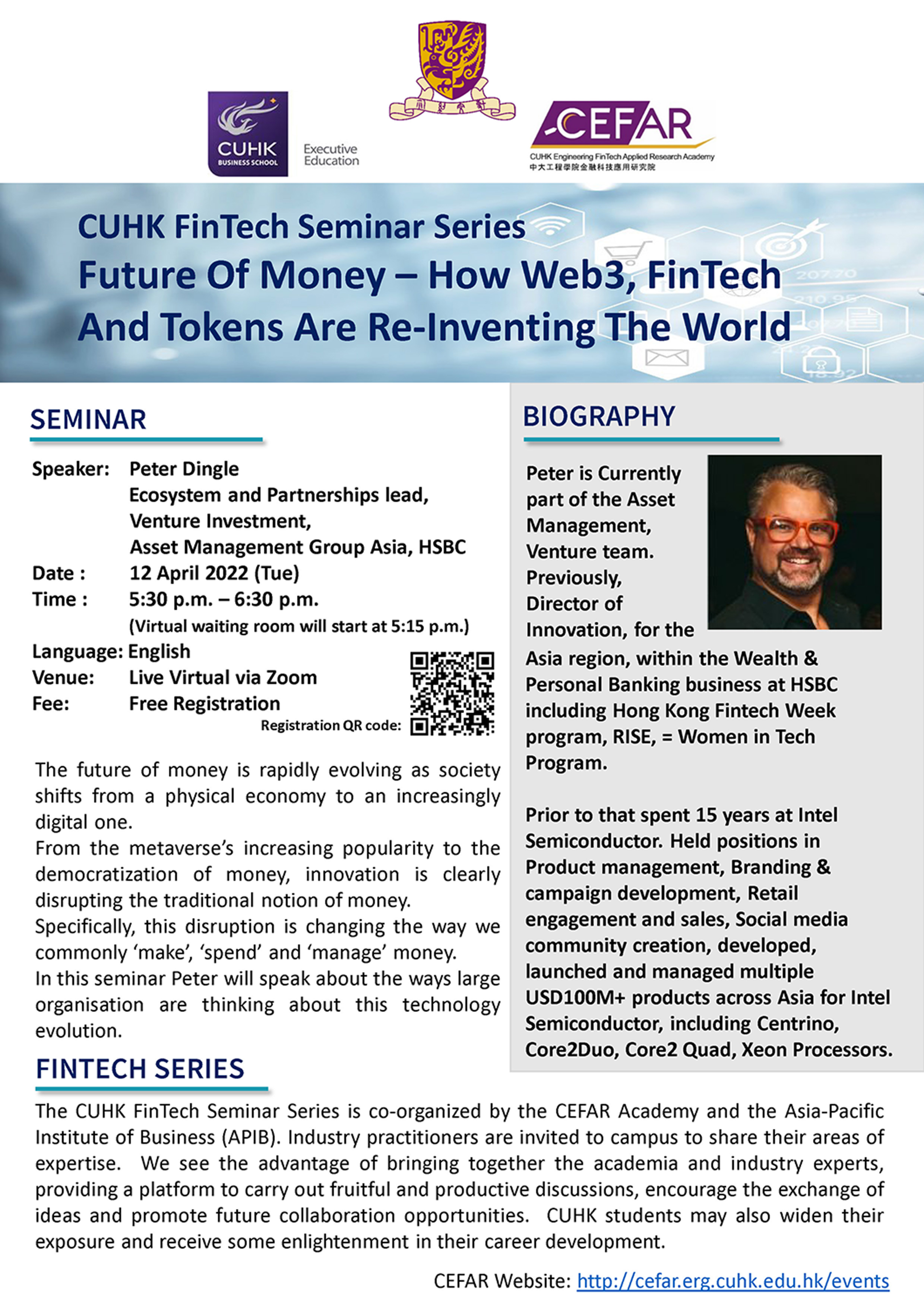Topic: A Glimpse at FinTech 2025
Date: 19 Apr 2022 (Tue)
Time: 5:30 p.m. - 6:30 p.m.
Format: Live virtual class (zoom)
Language: English
Register: https://cefar.cuhk.edu.hk/events
Fee: Free Registration
Speaker :
Peter Dingle,Ecosystem and Partnerships lead, Venture Investment, Asset Management Group Asia, HSBC
Abstract:
The future of money is rapidly evolving as society shifts from a physical economy to an increasingly digital one. From the metaverse’s increasing popularity to the democratization of money, innovation is clearly disrupting the traditional notion of money. Specifically, this disruption is changing the way we commonly ‘make’, ‘spend’ and ‘manage’ money. In this seminar Peter will speak about the ways large organisation are thinking about this technology evolution.
Biography
Peter is Currently part of the Asset Management, Venture team. Previously, Director of Innovation, for the Asia region, within the Wealth & Personal Banking business at HSBC including Hong Kong Fintech Week program, RISE, = Women in Tech Program. Prior to that spent 15 years at Intel Semiconductor. Held positions in Product management, Branding & campaign development, Retail engagement and sales, Social media community creation, developed, launched and managed multiple USD100M+ products across Asia for Intel Semiconductor, including Centrino, Core2Duo, Core2 Quad, Xeon Processors.
